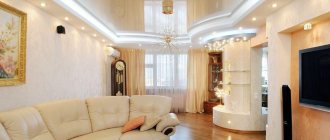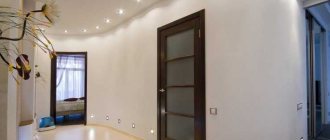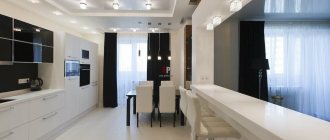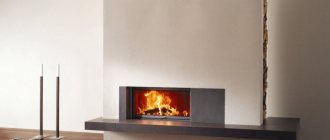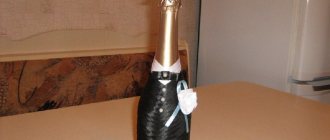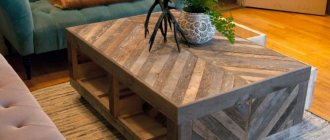It is impossible to imagine a modern apartment without built-in lamps. They look harmonious, stylish, and moreover, they significantly save energy. Spot light can visually expand a space when using mirrors or other reflective materials in the interior.
Comfortable living in the house depends on how well the lighting is chosen and whether the spotlights meet all safety parameters. Often, stores choose a classic chandelier with built-in spotlights for the ceiling. In this case, all dark corners in the room will be illuminated.
Lighting should also be functional. This means that in the recreation area it is more advisable to install lamps that provide soft, diffuse light. The dining area or work area should in this case be illuminated brighter.
The comfort of staying in the room with an artificial network depends on how correct the location of the lamps in the suspended ceiling is.
What should ceiling lights be like?
A certain type of built-in light bulbs is designed for mounting on a specific surface and is also mounted in its own way.
If you have to mount lamps in a thin sheet, then you need to know that not all materials can withstand the intense heating of the lamps.
The size and shape of spotlights is also of great importance. To implement any design of suspended ceilings with lamps, you need to carefully consider the design of the ceiling.
Lamps have a body made of different materials, so you should not choose a lamp with a transparent body. Otherwise, light may reach the internal communications of the lamp.
Light should not distort colors and objects in the room, nor interfere with the perception of reality.
As a rule, many lamps on store shelves emit light, so there is an excellent opportunity to choose lamps that are suitable in terms of power.
What is lighting design
Design is not just a pretty picture. This is also a precise plan: who will do what and where.
One person cannot create such a project
Lighting design is the art of controlling light, it is an opportunity to transform the interior and solve many problems. To do everything right, they create a separate lighting project. On graph paper or electronically, the engineer draws an exact plan of what the designer has come up with. Later, according to this plan, the installation master will carry out his work. Thus, a whole team is working on creating a tension system.
The designer paints a beautiful picture, the engineer makes sure that the dream comes true.
Ours, of course, does not pretend. But design is one of the key areas of activity.
Installation method
To insert a spotlight, you first need to make a hole in the canvas. A mark is placed in a certain place, a cut is made, and the base for the lamp is placed here - a plastic ring. It completely fits the dimensions of the future lamp, thanks to it the canvas does not diverge further.
After such manipulations, the light bulb itself is placed directly into this hole. You should think in advance about how many lamps you need to place in the suspended ceiling.
Features of choosing the color of the ceiling for the type of lighting
The right shade is akin to a successful poem written in a fit of inspiration. In the art of design, as in poetry: sometimes even combinations that are unfriendly to each other can give a stunning effect. However, they do not cancel the general rules known to everyone. After all, exceptions exist only to confirm them, right?
We have selected some useful tips for you that may well be useful if you do not know how best to reveal the advantages of a particular color in combination with the lighting of the lamps in the hall.
- intense lighting has the ability to greatly lighten the ceiling - therefore, avoid overly subtle and weakly expressed shades to avoid the unnecessary effect of a bleached surface;
- in low rooms, do not use a combination of a central chandelier with symmetrically located spotlights - this will cause an overloaded effect; it is best to choose a beautiful light color for the ceiling and make do with either one chandelier or spots located around the perimeter;
- LED strip successfully interacts with the shade of any temperature: remember this when you need to lighten or, conversely, darken the space a little;
- if the hall is located in the shady side of the house, choose warm shades as the main color of the ceiling and emphasize their influence using spotlights.
Above the suspended ceiling
If you install a built-in lamp on top of a stretch ceiling, then it will seem as if the light is spreading over the entire surface. This installation option looks quite impressive, but it has disadvantages.
The main disadvantage is the poor air flow between the panels, as a result of which the lamp will heat up quickly. To prevent this from happening, built-in lamps with LEDs are most often used.
Lighting under a suspended ceiling can be arranged in two ways:
With a plasterboard box
When installing a box with a protruding niche, the rules are as follows:
- a box made of plasterboard construction is installed around the perimeter of the room;
- The height of the box is 15-20 cm in relation to the ceiling (here you should focus on the installation level of the tension structure). Width - 40-50 cm;
- the lower part of the box protrudes slightly towards the central part of the room by 6-8 cm. At the edge there is a vertical edge six centimeters high. But during installation, make sure that there is 11 cm or more from the ceiling to the edge of the rib (this allows you to comfortably mount the ceiling);
- a ceiling structure molding is attached to the box, after which the ceiling itself is installed; light sources are attached to the bottom of the niche, and then connected to the power supply.
The second design option is a plasterboard box with lighting for a suspended ceiling, but with a hidden niche.
This option is suitable for glossy (mirror) tension structures, in which the open niche is reflected and spoils the view.
Externally, the structure has the shape of a box, with a hole inside.
The main task during installation is to install the structure within the plasterboard frame so that the light appears to be emitted from inside the box.
Due to the fact that light is emitted from a special hole, it is not visible in the mirror surface of the box.
Without plasterboard box
Experienced craftsmen often use a different method of organizing the ceiling system - without installing a plasterboard box.
The following installation options are popular:
- installation of lighting behind a suspended ceiling. Despite the sufficient thickness of the structure, light passes through it and creates a bright visual effect. To organize such lighting, you will need fluorescent lamps (LEDs), which are mounted between the main ceiling and the tension structure (this method is discussed in detail below);
- installation of lighting using several ceiling levels. In this case, the lighting from below should be decorated with a decorative protrusion or a special plinth that can hide the light source.
Watch the video: LED Ceiling Lighting
Level with the suspended ceiling
This option involves installing the lamp in a bracket, so the lamp will be on the same plane as the suspended ceiling. In this case, the light is not scattered and the lamps do not heat up.
With this installation there is a significant drawback, which is the power of the lamps, it should be no more than 35 watts.
First steps
Before choosing the appropriate arrangement of light bulbs on a suspended ceiling, you need to calculate the approximate number of lighting fixtures so that the lighting is not too dim or, conversely, too bright. There is a special formula that allows you to calculate the required number of light bulbs.
To do this, divide the ceiling area by 1.5 and you will get the number of light bulbs. Do not choose lamps more powerful than 35 W, since a light source that is too bright can have a detrimental effect on the ceiling material and burn it. Place the lamps in such a way that there is a distance of at least 30 cm between them. Knowing the formula, all you have to do is choose the lighting design style that is most attractive to you.
Installation of LED strips
Installing such lighting yourself is not as difficult as you think. Just watch a couple of training videos and take into account some of the nuances.
1. Calculate the required amount of materials. Diodes are most often sold in neon tubes 5 meters long - take this into account when purchasing and ask to cut off the missing quantity separately. 2. Select a transformer. Read about how to do this here. If you are not sure about your decision, contact a consultant in the store. 3. Connect the transformer to the cable whose phase wire passes through the switch. Follow the diagram drawn on the packaging - there is no universal option, it all depends on the model. 4. Place it in a niche on the ceiling, then remove the braid from the cable and strip it about half a centimeter. 5. Connect the wires from the transformer marked “ACL” on the housing to the phase wire of the supply cable, and the blue ones marked “ACN” to the working zero. Then connect the LED strip, strictly according to the color marking of the wires, red (+) from the transformer to the red wire from the LED strip, and black (-) to black. Please remember that these are general recommendations - individual cases may vary, so read the instructions carefully. 6. Now you can check whether the circuit works - just turn on the electricity (we hope you understand that all work must begin after making sure that there is no current supply). If the tape turns on, half the job is done - all that remains is to secure it in such a way as to achieve the desired result. 7. It doesn’t matter what design you choose, you will have to act according to approximately the same plan. Look for more specific recommendations in the corresponding section of our website.
8. Most LED strips have an adhesive mixture on the back. Remove the protective film and lay the tape according to the plan diagram you developed. Keep in mind that you need to ensure clean lines and a tight fit if you plan to have beautiful lighting. Important: Do not remove the protective layer immediately, but gradually, to prevent it from deteriorating and the tape sticking to the wrong place. 9. Most often, the standard length is not enough: unless you plan to highlight a small area. Therefore, you will have to connect the strips together for a complete structure. Of course, you can try to reinvent the wheel and come up with something yourself. But we strongly recommend that you buy special connectors - they are easy to use and safe. Simply place the edges of the two strips so that their contact pads are under the contacts of the connector and snap into place. It is done!
Important: Under no circumstances connect two tapes from different transformers. This is fraught with fire.
As you can see, there is nothing complicated in installing LED strips - the main thing is to carefully study the instructions. However, keep in mind that each type of design has its own characteristics - it is better to study them separately.

